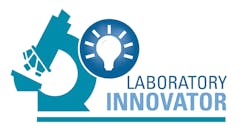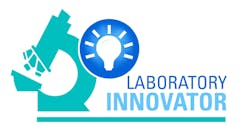Of course – the cell and gene therapy (CGT) industry is regularly making headlines, and for very good reason. There’s a lot of excitement right now around this emerging class of therapeutics, particularly in areas like cancer and inherited disorders like sickle cell anemia where patients have limited treatment options. What’s unique about CGT is these therapies hold the potential to not just prevent and treat diseases, but to potentially cure them. This is because these therapies work by addressing the root cause of diseases, which can be found at the level of the patient’s DNA. In brief, gene therapies work by introducing genetic material into the patient to inactivate, modify, or replace the gene(s) associated with the disease. Alternatively, a patient’s cells can be removed from their body and the genetic modifications can be made in a laboratory, then returned to the patient’s body, and this is known as gene-modified cell therapy.
Though CGT holds incredible promise, the actual number of commercially available therapies is currently just over 20 in the U.S. That said, there is a robust clinical pipeline of thousands of candidates, and CGT remains an active area for science and technology development. The demand is there, and the pressure is on to bring these therapies to market faster and more affordably.
What are Thermo Fisher’s primary strategies when it comes to helping advance cell and gene therapies?
To help advance cell and gene therapies, we’ve integrated our broad portfolio of fit-for-purpose products into flexible workflow solutions to help CGT developers confidently move their CGT assets from R&D through clinical development, and then scale to commercial manufacturing. In concert with our global pharmaceutical services network, our differentiating value lies in the privilege of supporting both build and buy strategies for our CGT customers, including quality and regulatory expertise, leading supply chain capabilities, and customer-centric focus on which Thermo Fisher has built its reputation over decades of serving the CGT market.
While internal collaboration drives better solutions and customer experience, external collaboration is a key driver of our innovation strategy. We listen closely to what our customers need and design our products and workflow offerings based on our learnings. Our strategies work best when we partner with CGT developers early. As an example of the benefits of early collaboration, we have an ongoing strategic partnership with Arsenal Biosciences, Inc., a clinical-stage company developing programmable, autologous T-cells to treat solid tumors. Our collaboration has thrived, not only due to early access to technology, but by cultivating a close working relationship, transparency, and importantly, a shared vision. This vision is to advance and optimize their manufacturing workflows with urgency to get into the clinic faster and with the confidence that the processes will hold up to CMC and regulatory scrutiny.
Earlier in the year we celebrated the opening of our cGMP cell therapy manufacturing facility housed at the University of California, San Francisco’s Medical Center’s Mission Bay campus. Being at the center of this CGT ecosystem, we engage with world-class researchers, clinicians, and ultimately, patients, providing early access to our technologies and our team’s expertise. The feedback we receive informs our innovation strategy and together, we can help developers overcome many of the CGT manufacturing challenges that must be addressed to bring new treatments to market at scale.
The U.S. Food and Drug Administration has approved numerous gene therapies the past couple years for diseases such as bladder cancer and Duchenne muscular dystrophy. What upcoming approvals do you foresee in the next five years for gene therapies?
With over 2,000 clinical trials for cell and gene therapies underway, the next five years will bring further growth and several key approvals. Recently, the focus has been on the innovative companies developing gene editing treatments for sickle cell, with approval(s) expected later this year. Sickle cell is a rare disease with limited treatment options, so a potential gene editing cure would be a major milestone for patients. Furthermore, one of the treatments being developed by Vertex and CRISPR Therapeutics would be the first gene editing treatment based on CRISPR-Cas9, if approved.
While it is difficult to predict exactly which diseases will see approvals in the next five years, I expect that many more treatments will emerge and be approved for a range of rare and orphan diseases, which continue to be an important area of investment for CGT. However, cell and gene therapies for broader indications like diabetes and solid tumors is where the industry is going. Addressing larger patient populations, possibly with single dose therapies, brings enormous benefits to affected patients; however, healthcare provider and payer systems are not currently set up for this new treatment paradigm.
How are biotechnology companies addressing cell and gene therapies manufacturing capacity constraints?
A fundamental and unique challenge faced in CGT manufacturing is the highly manual, aseptic, and complex nature of the manufacturing process itself. There are also challenges associated with scaling lab-developed processes so these therapies can be produced outside the lab at therapeutically relevant doses.
Our biotech partners turn to us at Thermo Fisher to help them automate and standardize approaches so they can achieve scale and avoid potential failures further down the road. While our partners are working on developing cutting edge treatments, our focus is on continually innovating to help drive cost down and shorten timelines so once these treatments are approved, they can be made accessible to patients.
What advice do you have for women aspiring to leadership roles in the life sciences?
More than a role, leadership is a set of qualities and behaviors that can be cultivated. Though more natural to some, I’ve seen excellent examples of leadership at all organizational levels, the common denominator being an ability to inspire and drive people toward a common goal. The path for getting to a formal leadership position is as varied as the leadership styles themselves. For me, I leaned in on the technical side, pursuing a PhD in pharmacology, carving a path from bench scientist to product manager, business development to marketing and sales roles. The critical learnings on the way for me was to anchor on my core beliefs, know my strengths and blind spots, and be willing to take calculated risks that pushed me out of my comfort zone. Now with Thermo Fisher for nearly 20 years, I’ve grown with the company, serving in a variety of technical, commercial, and business leadership roles at the divisional and corporate levels.






